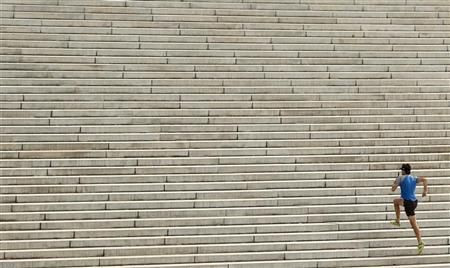
You might want to be extra precise when it comes to physical activity and your knees.
According to research done by the University of California in San Francisco (UCSF), participating frequently in high-impact activities, such as running, appears associated with more degenerated cartilage and potentially a higher risk for development of osteoarthritis.
Over 200 patients between 45 and 60 years old were examined and asked to record their physical activity.
"When we compared the scores among groups, we found an accelerated progression of T2 relaxation times in those who were the most physically active," Thomas M. Link, professor of radiology and chief of musculoskeletal imaging at UCSF, said. "Those who had very low levels of activity also had accelerated progression of T2 values. This suggests that there may be an optimal level of physical activity to preserve the cartilage."
Link said that people who have a higher risk for osteoarthritis can reduce their risk for cartilage degeneration by maintaining a healthy weight and avoiding risky activities and strenuous, high-impact exercise.
"Lower impact sports, such as walking or swimming, are likely more beneficial than higher impact sports, such as running or tennis, in individuals at risk for osteoarthritis," he said.
According to the Centers for Disease Control and Prevention, nearly one in every two people in the U.S. may develop knee osteoarthritis by age 85, and by 2030, an estimated 67 million Americans over the age of 18 are projected to have physician-diagnosed arthritis.
© 2025 Latin Times. All rights reserved. Do not reproduce without permission.




